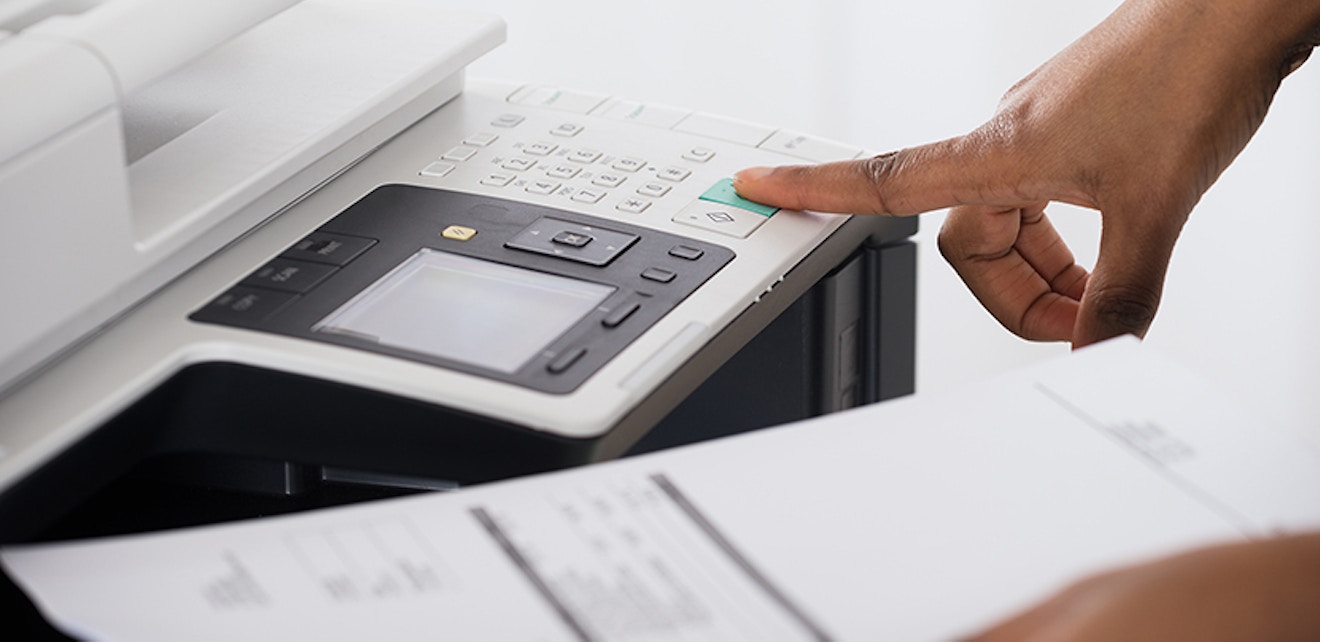Home > Blog
Read Time — 5 minutes
Top 5 Benefits of Managed Print Services (MPS) for End Users

In our last post we looked at the benefits of managed print for providers. There's a long list, but we narrowed it down to five and focused on the opportunities for recurring revenue, and how providers can use MPS to differentiate their offerings and provide end users with added value. There are some benefits that an MPS program affords both providers and end users—increased efficiency and decreased print-related costs in particular—but in this post we'll be focusing on the direct benefits of MPS for end users.
Providers, if you're not already offering your customers MPS, here are five ways you could be delivering them additional value and improve your KPIs. End users, if you're not currently on an MPS program or using a print management solution, here are five reasons why you should be:
1. Remote monitoring
Despite discussions about the paperless or paper-light office, the reality is that print is still a necessity for many organizations. It might seem to go without saying, but the number one benefit of MPS for end users is the ability to outsource the management of their print operations, including supplies and service, which wouldn't be possible without remote monitoring. Cumbersome and time-consuming activities that detract from a business’ overall efficiency like placing service calls or manually submitting supply orders can be dramatically simplified using a remote monitoring tool. Without remote monitoring, managed print programs would not be nearly as successful or efficient as they are today and would rely on outdated manual processes. Remote monitoring means that customers no longer have to email or call in supply orders.
2. Simple supply and service management
Supply and service management can be labor-intensive for many organizations. Most end users don't have a dedicated team to monitor supply levels, place orders, and make service calls when necessary. As a result, these tasks usually fall to a number of individuals and the subsequent manual processes can be disorganized and costly. Businesses are often faced with a feast-or-famine dilemma when it comes to their toner. They end up with too little or too much of what they need, supplies sit on shelves so long they expire, and cartridges are replaced too early, so end users end up paying for more toner than they need. On top of that, device downtime can result in unforeseen productivity losses and frustration on the end users’ part.
Imagine receiving supplies when you need them without having to place an order. Imagine having a service technician show up to resolve an issue without placing a service a call or, better yet, fixing the problem remotely. An MPS solution can make supply and service management simpler for both providers and end users, eliminating the hassle that customers face on a regular basis when it comes to supply ordering and device maintenance.
3. Reduced IT workload
As with supplies and service, many end users do not have a dedicated resource to manage devices in the office. The responsibility often falls to IT staff who are also responsible for managing every other aspect of a company’s IT infrastructure, unless these are outsourced with a managed service provider (MSP). From diagnosing device problems on their own to actually placing helpdesk calls, IT staff can end up spending a lot of time dealing with device maintenance. An MPS program can eliminate the time IT spends on device-related issues so they can focus their efforts on their primary responsibilities. This effectively makes device management more efficient, which enhances end users’ productivity.
4. Automation
Manual processes are still the norm for many businesses in the print and imaging industry and this is true for end users as well. Even if customers have an MPS contract with a provider, I've heard tales of woe from providers who receive supply orders from their clients via fax! Why is this the case given the strides the channel is making in supply chain automation? Moving to an automated process can be a daunting prospect for many end users. As the old adage goes, if it isn’t broke, don’t fix it.
Customers that have a tried-and-true method for managing their print operations, particularly when it comes with complete control, might be hard-pressed to see the benefits of automating supply ordering or break-fix services. Why give up control over their data to outsource a process they've been managing themselves for so many years? This is where the provider comes in with their value proposition for just-in-time or automated supplies fulfillment : low or no-touch order process, increased productivity, greater efficiency, and cost savings.
5. Added insights
Data is becoming an increasingly important resource for businesses as they look for greater insights into all aspects of their operations. This is as true for print as it is other processes; data collection and analysis is the foundational functionality that underpins all managed print programs. Many MPS solutions come with powerful reporting tools that can provide you with insights into end user print activities including information about problem devices, utilization, page coverage, and more. These metrics will help MPS providers determine if an end user's devices are operating efficiently or being correctly utilized so they can work with their customer to optimize the print environment. Without an MPS program, end users are unable to address many of these issues on their own. Device data affords providers and end users with the insights necessary to increase efficiency and decrease costs.
These benefits can help steer conversations with end users when it comes to managed print services, but if you're looking for additional information about the MPS market, download our free Complete Guide to MPS for industry trends, opportunities, and more.
See how ECI's Print Management Software can help with your MPS program.



